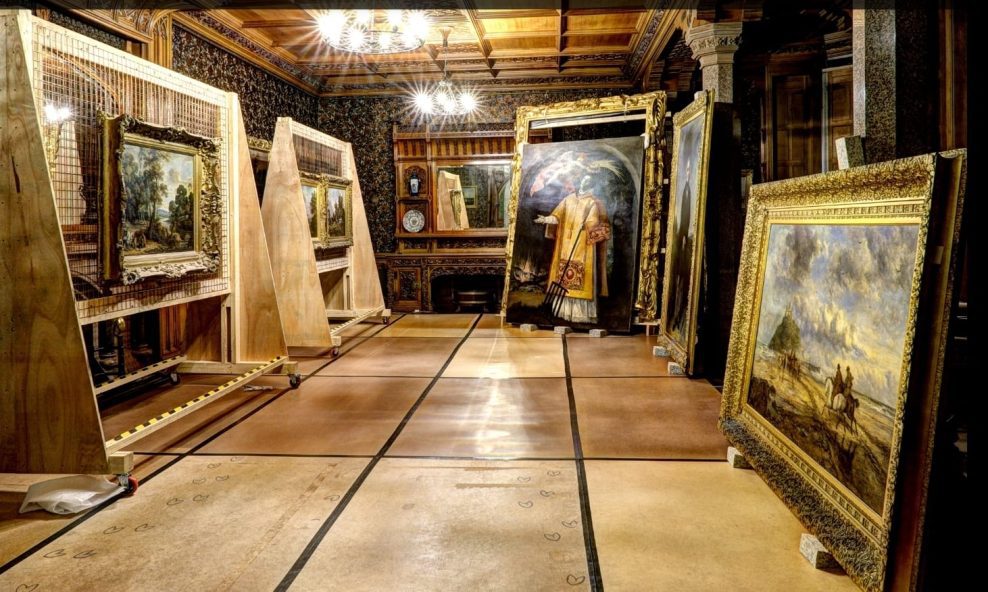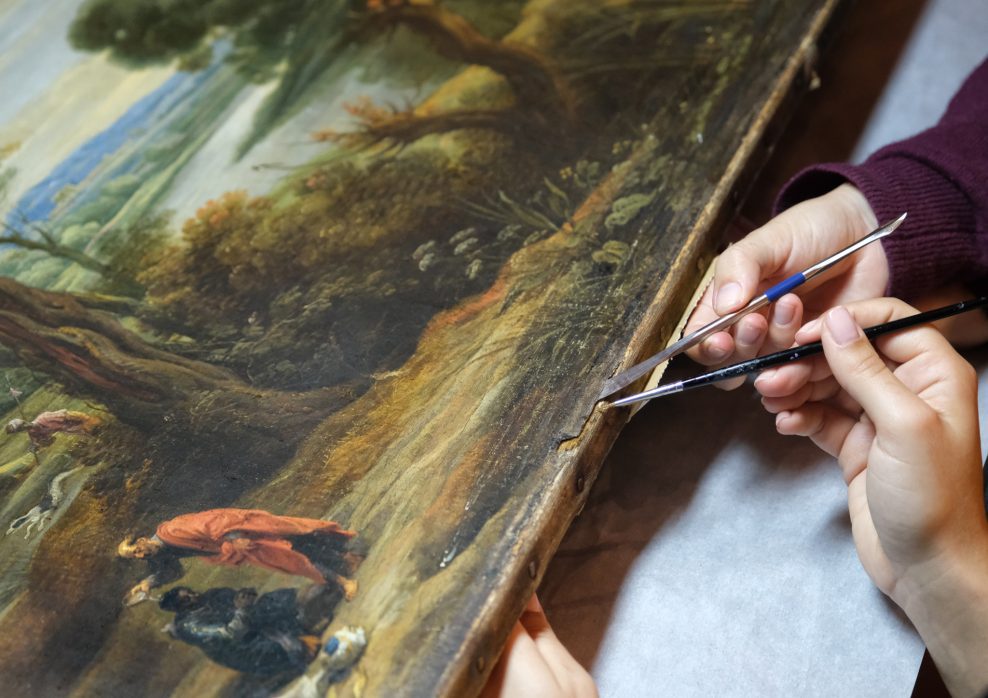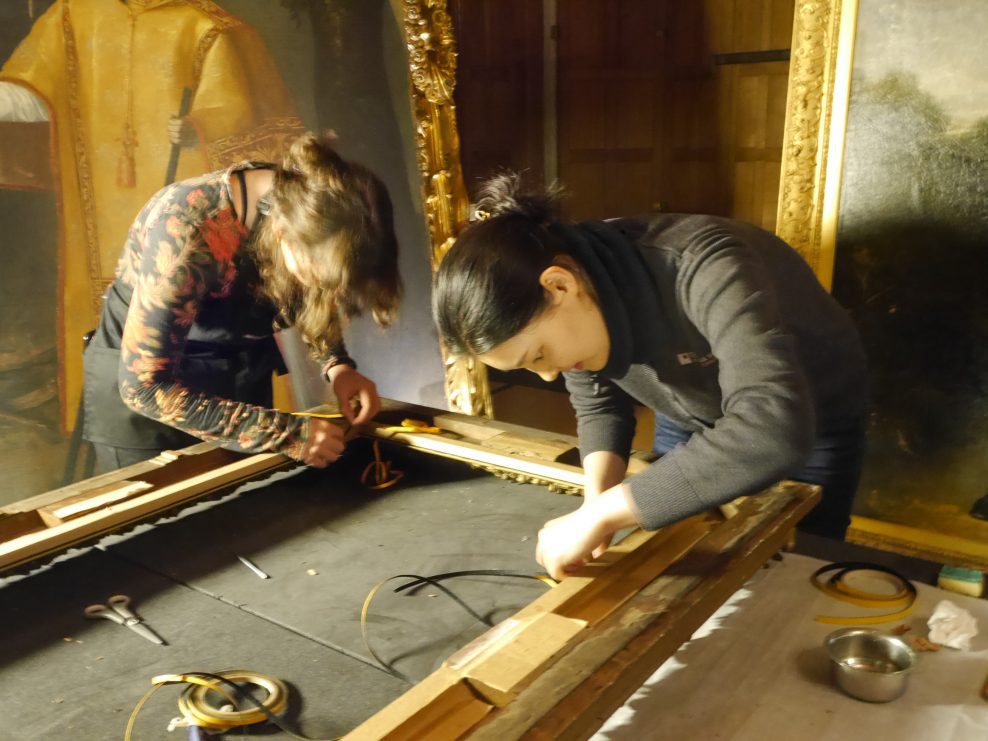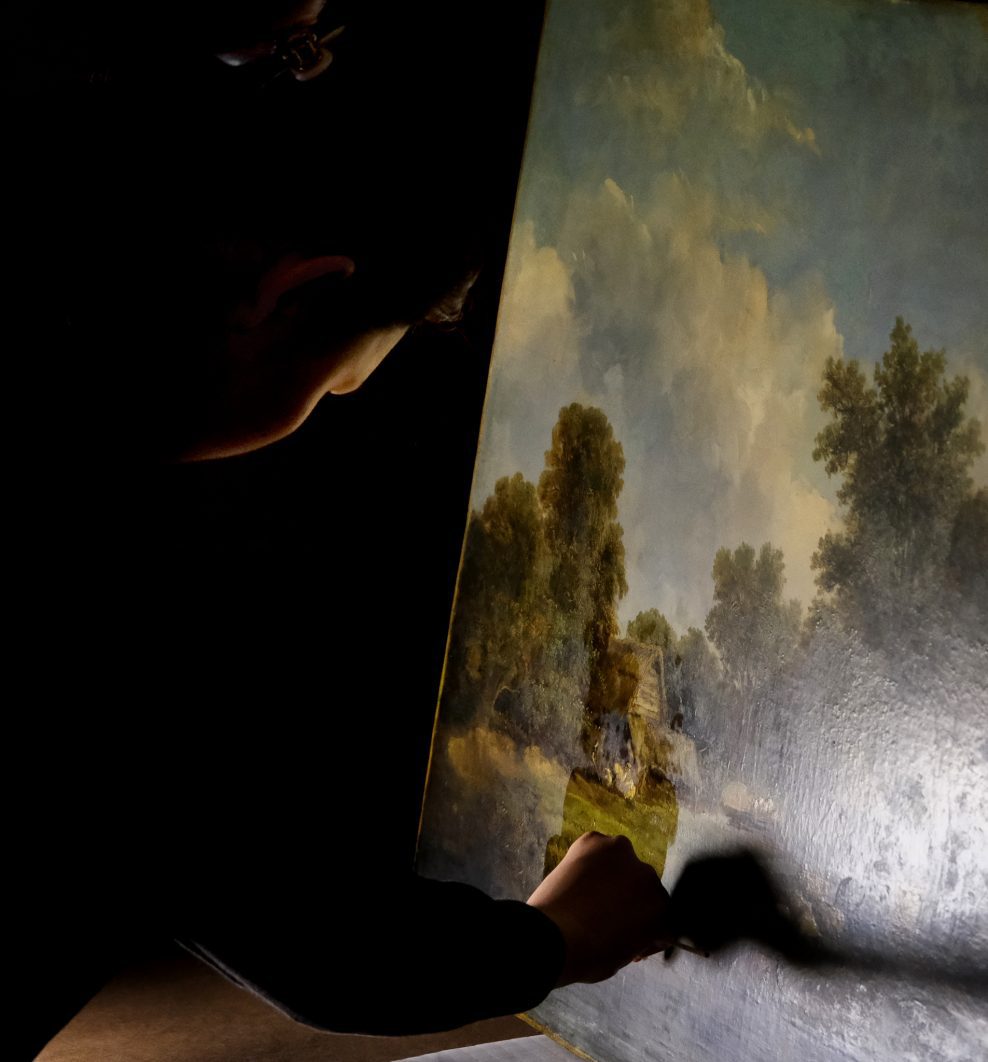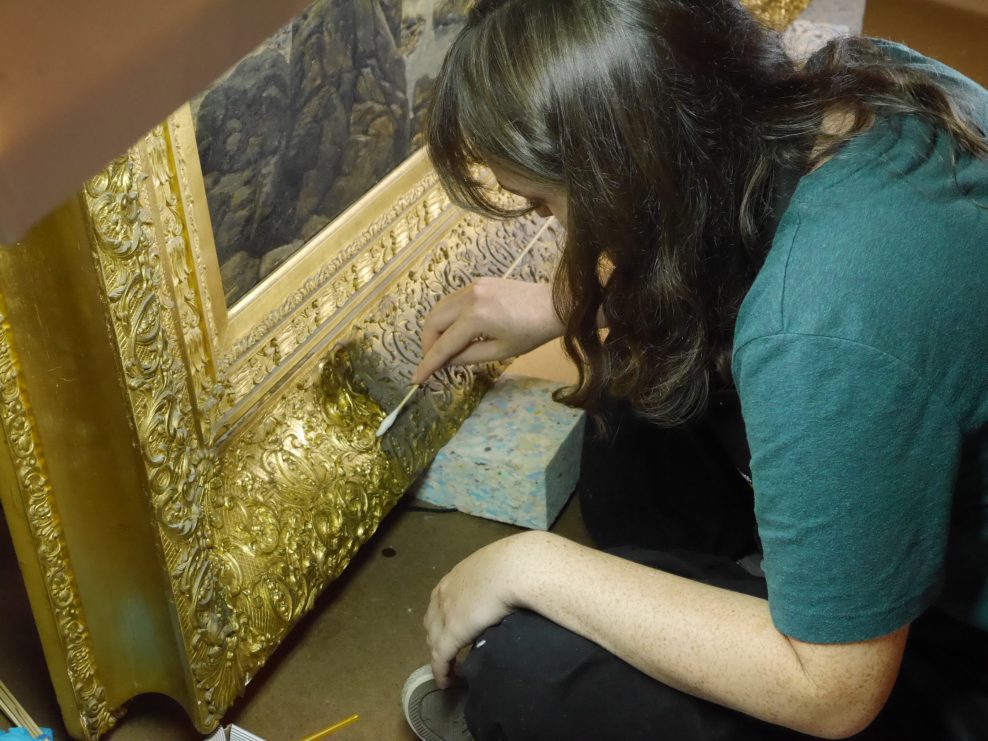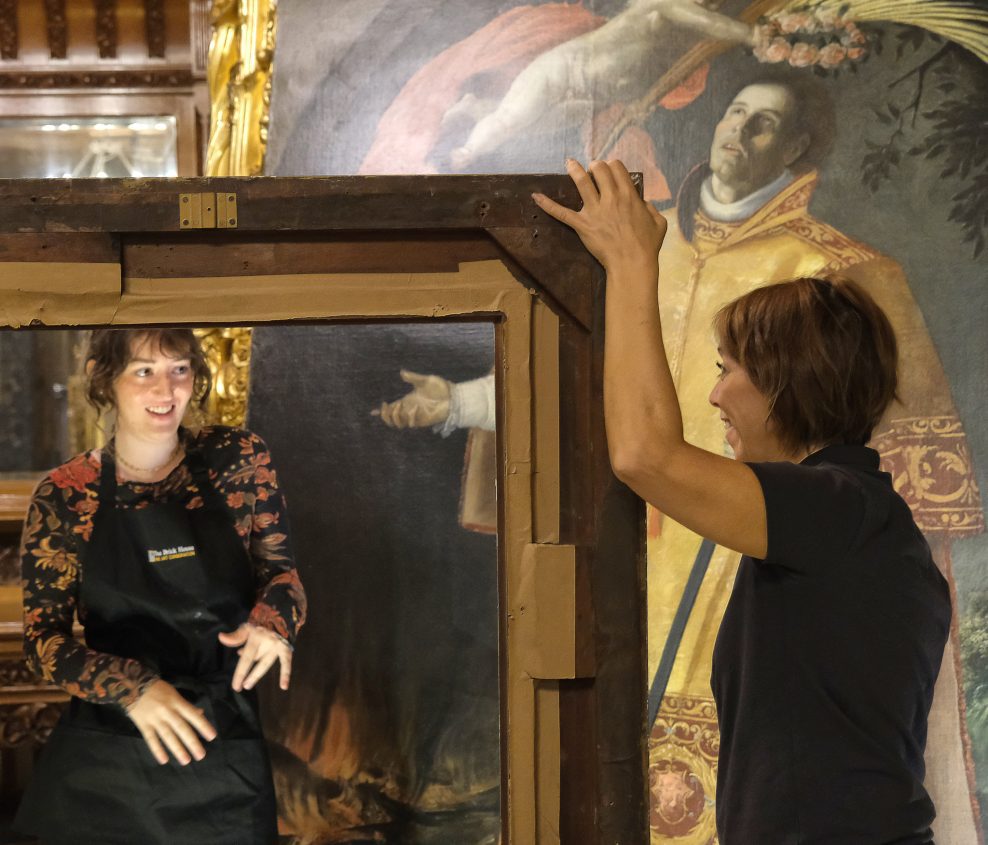Projects
Tyntesfield Paintings
Conserving paintings and frames for The National Trust on site at Tyntesfield
Each painting was individually assessed to determine its current condition. This enabled decisions to be made which conservation treatments might be possible in the time available whilst working on-site. Interesting inscriptions and provenance labels were photographed, and any localised damages or relevant details.
Vacuuming was carried out, especially under the stretcher bars to remove trapped debris and cobwebs. Painted surfaces with flaking paint, were consolidated. De-framing a painting can sometimes reveal corroded tacks, degraded canvas or other issues which may be fixed temporarily or are referred for studio treatment. The stretcher keys are secured to stop them falling and becoming trapped between canvas and stretcher. The canvas tension can then be restored.
The painted surfaces were then carefully cleaned with cotton swabs using aqueous solutions to remove the layers of surface dirt. Old and discoloured yellow varnishes were left intact for prioritised studio conservation treatment as their removal requires hazardous solvents and the use of specialist extraction. As a temporary measure, a fresh coat of synthetic resin varnish is applied to re-saturate and protect the artist’s paint until time and budgets available for full treatments.
Preventative conservation measures were implemented on the back of each frame, adding felt ribbon to deter paint abrasion and securely reframing with inert spacers to prevent movement. A transparent membrane was added to the back, protects from potential water damage or future layers of dust settling on the canvas.
Where time allowed, surface dirt was cleaned from the lower member of the gilded frame where the dust had noticeably settled, improving the visual appearance of the frame as a whole. Loose decorations were consolidated and any detracting white gesso damages retouched with watercolours.
All conservation treatment was then documented and photographs added to the National Trust files as a record of work carried out and the materials used for future reference. This level of work is so important for each artwork, protecting and reducing the risk of future damage, and enabling them to remain on display in the house for the enjoyment of the public and retaining the beautiful character of the interior setting.
